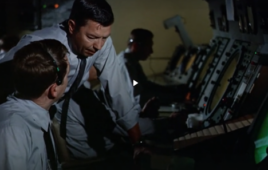American Cable Association President and CEO Matthew Polka on Tuesday laid out four principals to help close the digital divide, telling Congress that it should first encourage private investment for future fixed and mobile broadband deployments.
Polka’s testimony before the House Energy & Commerce Subcommittee on Communications and Technology comes one day after reports surfaced that the Trump Administration is considering a government-built national 5G network, in contrast to one built by the private sector.
Polka said the federal government should not undermine private investments poured into broadband infrastructure, which he pegged at more than $75 billion annually. For one, government funds should not be used to overbuild providers, Polka said.
Second, the government should remove barriers to deployment, Polka told the committee during the legislative hearing called “Closing the Digital Divide: Broadband Infrastructure Solutions.” Steps that should be taken include removing impediments for utility pole attachers to overlash and ensuring pole owners use a transparent and timely application approval process, among others.
Third, Polka suggested the government should wait to account for additional broadband deployments in unserved areas that come as a result of the removal of aforementioned barriers, the new corporate tax law, and existing federal support programs before committing more federal funds to the effort.
“ACA calculates that by removing barriers, providers’ costs to deploy will be reduced such that 1.2 million homes would become served with fiber infrastructure through private investment alone,” Polka said.
“The new tax law will likewise result in more than 400,000 unserved homes being served, and the Connect America programs will reduce homes receiving less than 10 Mbps speeds by 2 million by 2020,” he added.
Finally, Polka urged Congress to provide broadband subsidies “efficiently,” pointing to programs like “Connect America,” which helped guide awarding government support more effectively. Polka said where additional support is needed, the FCC’s work should be built upon by providing broadband subsidies only in unserved, high cost areas; accounting for subsidies provided by states; and using reverse auctions to distribute support.
Filed Under: Industry regulations




